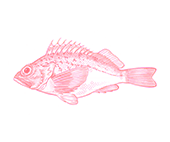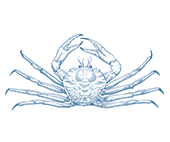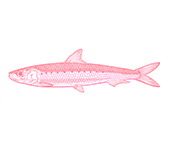




- Better Choice
- Eat Less
Wild Caught
Region:
WA
Note: Choose sardines caught in WA’s west coast rather than those caught on the south coast.
- Australian sardines are caught in commercial fisheries across southern Australia. The SA-managed fishery, is the largest, though there are significant fisheries caught for human consumption and other purposes in WA.
- Australian sardine populations are healthy in all fisheries.
- The WA Australian sardine fishery uses purse seine fhshing methods and catches two species: Tropical sardine on the west coast and Australian sardine on the south and west coasts. Tropical sardine populations are in healthy condition.
- The WA west coast fishery catches the bulk of sardines for human consumption in WA, and is not a risk to endangered marine wildlife. WA West coast-caught sardines are a GoodFish Better Choice.
- The WA south coast fishery has some bycatch of endangered seabirds, but efforts by industry and fishery managers have meaningfully reduced the risk posed by fishing, though there are still some concerns. WA south coast sardines are GoodFish ranked as eat less.
- Purse seine fishing for Australian sardines poses minimal risk to vulnerable marine habitats.




Sardines are a quick and easy meal, high in beneficial Omega-3’s as well as being affordable and delicious. They are increasingly available as boneless ‘butterflied sardines’ with only the tail attached. These can be quickly barbequed or placed under a grill or in a hot oven. They will take less than 5 minutes to cook, making them a great quick meal. Butterflied sardines are also delicious crumbed and fried. Try some parsley and lemon zest in with the breadcrumbs. Whole sardines can be barbecued or roast, requiring only 3-4 minutes per side at high heat to cook through. Squeeze lots of lemon over them and top with fresh herbs to serve.
- WA West Coast Purse-Seine Managed Fishery (118t of Australian sardine and 376t of tropical sardine in 2020/21)
- WA South Coast Purse-Seine Managed Fishery ~1,213t in 2021 of Australian sardine)
Australian sardine and tropical sardine (also known as scaly mackerel) are small, very fast-growing fish. Australian sardine is found across southern Australia, whereas tropical sardine is found along Western Australia’s west coast. They are an important prey species for a range of predators, such as dolphins, whales, tunas, and seabirds. There are a number of fisheries targeting Australian sardines around the country, with the largest fishery operating off SA.
In Western Australia, Australian sardine and tropical sardines are caught in two commercial fisheries; on the west and south coasts. The former catches predominantly tropical sardine and a lesser proportion of Australian sardine, whereas 99% of catch in the south coast fishery catch is Australian sardine.
Populations of both species are healthy, and commercial fisheries currently catch only a fraction of historic levels so there is little risk of overfishing.
All Australian sardine fisheries reserve most of their catch for non-human consumption purposes, such as for fishing bait, pet food and, importantly, aquaculture feed.
Sardines are caught using purse seine fishing methods in both WA fisheries. This is a relatively targeted fishing method with little finfish bycatch. The purse seine nets used are deployed at the surface, and have only a very occasional contact with vulnerable seafloor habitats, such as seagrass beds.
The south coast sardine fishery in WA has a significant issue with bycatch of endangered flesh-footed shearwaters. Recent efforts by industry and managers to better understand and then reduce seabird bycatch are welcome and have been effective in demonstrating that recent bycatch levels do not directly threaten the affected shearwater population. However, time has passed since the most recent independent observer study of the fishery that collected robust data on shearwater bycatch, and regular such studies must be ongoing (along with action to further reduce bycatch if such a need is identified) in order to improve this ranking at the next GoodFish assessment, given that the flesh-footed shearwater population continues is pressured by a range of stressors and is thought to be declining.
The WA west coast fishery is unlikely to pose a threat to flesh-footed shearwaters or other protected species, and operates in waters distant from flesh-footed shearwater breeding colonies.


